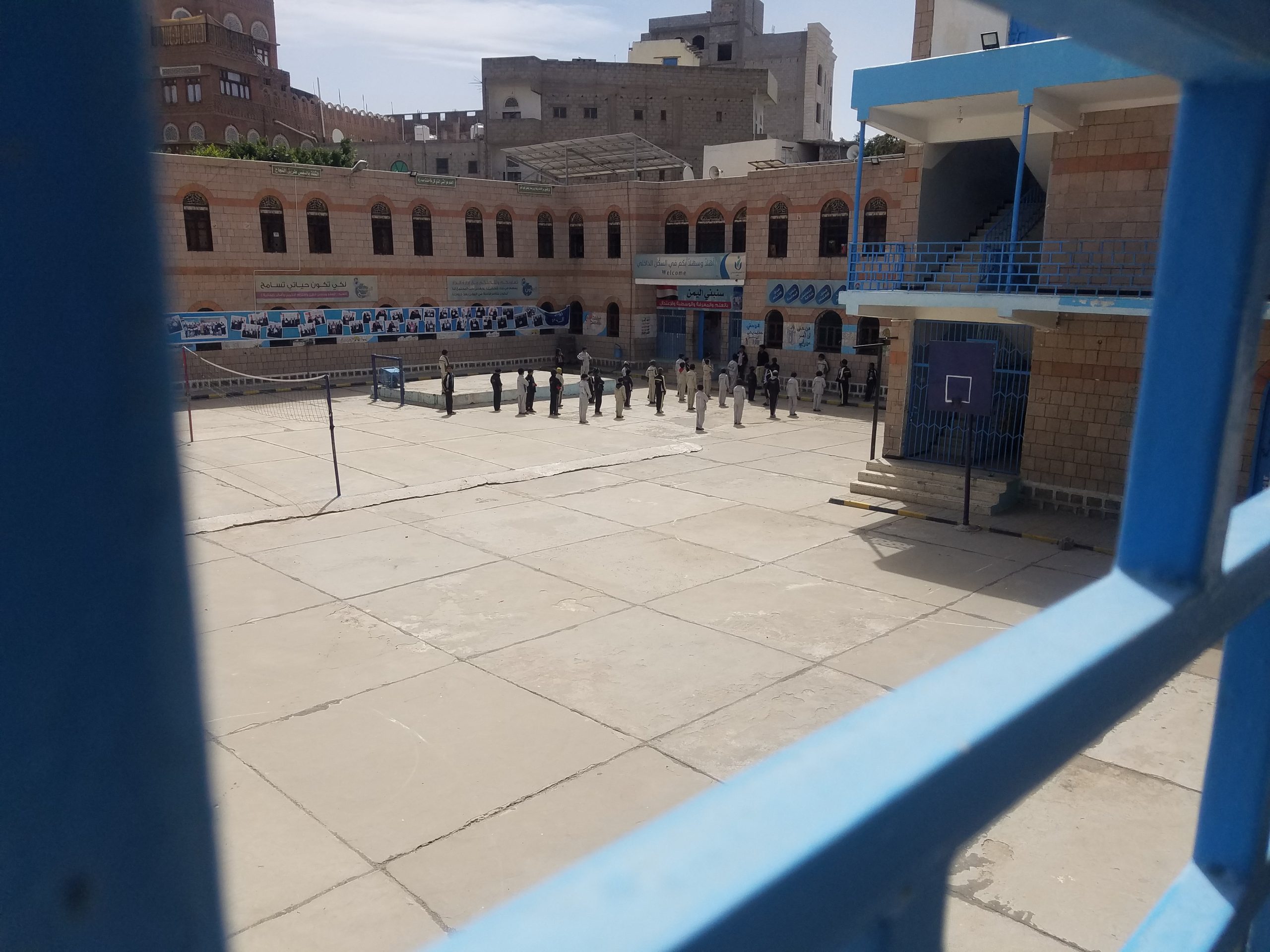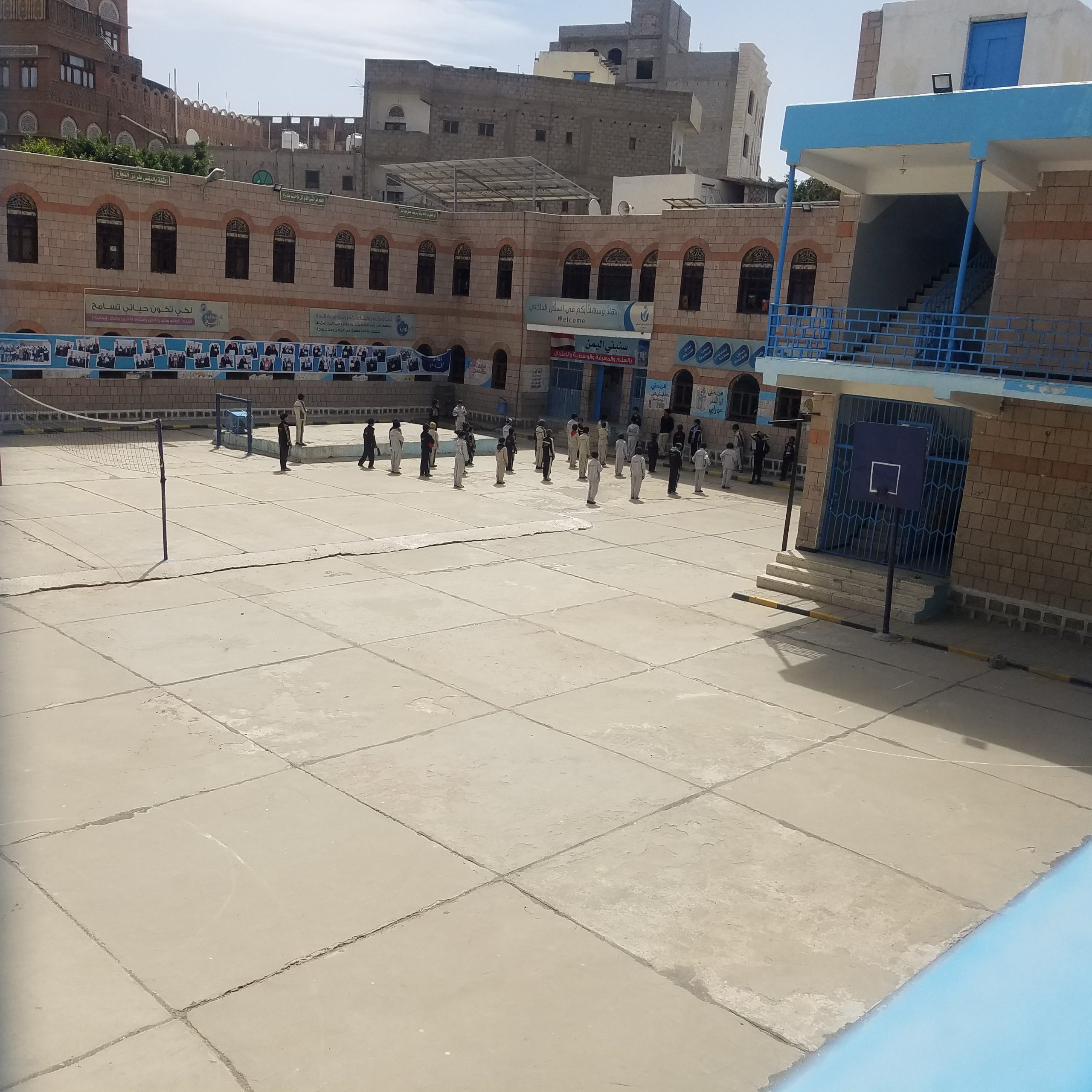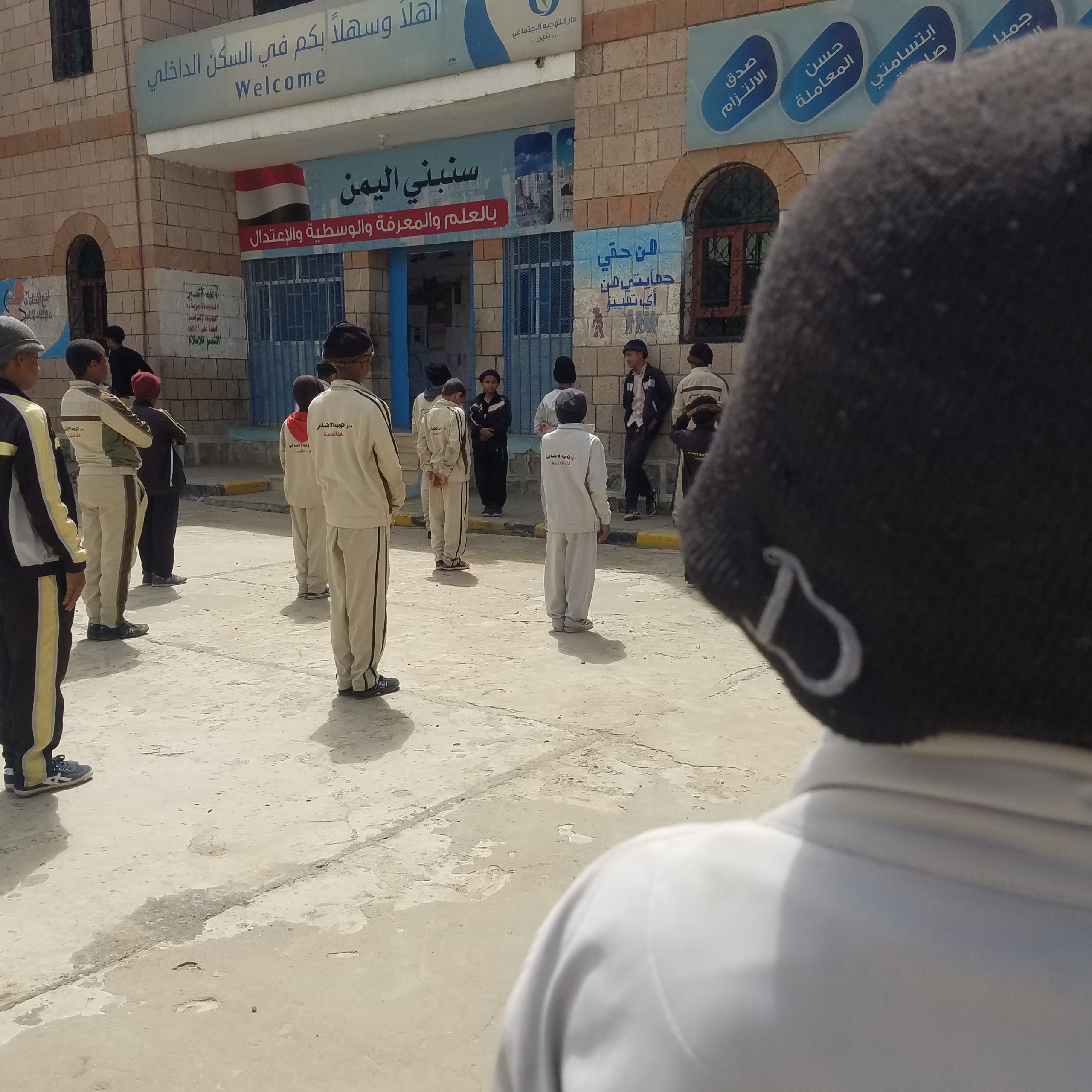
Issam Al-Qudsi | Sana’a
On Sunday, June 6th, at 9:30am, Mrs. Fadia – characters’ names have been ch anged to preserve their privacy – was standing in front of the gateway to a place she had gone a long way to reach. The gatekeeper inquired about the reason for her arrival and the purpose of entry while checking a plastic bag, on which a local company advertisement was printed, used for bringing some stuff for the visit.
Prisoner Number One: A 10-year-old child
The lady gained access to the building’s courtyard and headed for a window with an iron grid and a small opening. Many people line up in front of this window every day for an hour or less. Their waiting time depends on how much their wish to come here is gratified. In less than five minutes after the lady’s arrival, she talked to a child, as young as 10 years old. Separating them was an iron grid similar to prison grids.
This visit has much in common with prisoner’s visits. Though both share some details in common, there is a huge difference between them since the detainee behind bars is a mere child. Perhaps the right place for him is outside these premises that are surrounded by huge fences and have long corridors. This is the Social Guidance Center to which juveniles breaching laws are taken.
The imprisonment is no longer limited to older persons or adults. Children, too, can be “jailed” to be deprived of liberty, grow up behind bars, and have their best years when they are supposed to enjoy the splendor of life and live the best time of their lives wasted in vain. Whereas street children suffer from labor hardships and the associated risks, other children spend their childhood behind bars deprived from enjoying a normal life.
At the Social Guidance Center for Boys in Sana’a, known as the juvenile detention facility, there are approximately 200 young law-breakers who do not know why they were brought to the center and how they ended up in such a place with others who share the same destiny. In their minds arise many questions for which they seek satisfactorily answers.

Established in 1978, the Social Guidance Center for Boys is a facility that hosts children who break laws or who are known as young offenders or juveniles.
Any person visiting the Social Guidance Center for juvenile detention will leave it in deep grief and with shattered hopes in humanity, no matter what the circumstances are. The center’s premises have witnessed dozens of heartbreaking stories of children who are victims of either their families or the society.
Escaping to the Unknown
A child named Murad was watching us with looks full of wonder, smiling more when we stared at him as we spoke with one of the center’s employees. We approached him to listen to his story and what led him to this place.
Being held here is not a penalty for something he had committed. It is rather the cruel life he had in his house.
At his home, he used to be beaten up and suffer from violence and lack of both affection and compassion. Consequently, he was forcibly driven to choose for himself the bitter options by deciding to run away from home.
That was the option that worked best for him. It marked the beginning of a life not less brutal than the injustice and cruelty of his family.
Finding that he is spending “toxic” days in a “toxic” house day after day with cruelty and violence being practiced against him, he decided to put an end to it and run away into the unknown.
The child has spent 80 days of his life in the juvenile house. Before that period, he had led a homeless life for more than a year and a half out in the streets, with his family knowing nothing about his destiny. He later met other children who were earlier doomed to the same destiny.
They took a job as car cleaners together. They spent their lives, day and night, in the streets until someone came and encouraged him to steal a bicycle. As a consequence, the child found himself in the grip of the police and ended up in the juvenile detention center.
The center receives an increasing number of newcomers accused of different charges on a daily basis. This raises a question in our minds: “What are the reasons that might drive a child at this young age to engage in or commit an illegal action? Though some of the detained children have committed major crimes, they are the victims of these crimes; either due to the motives, causes or consequences, according to the specialists at the Social Guidance Center.

In other hand The Director of the Center asserted that there are some children in the Center who were not welcomed by their families, even after their release. When the social workers contacted these families to know the reasons, they received heartbreaking responses that, in turn, trigger a major relapse for the children.
A social worker of the institution indicated, on condition of anonymity, in her interview with Khuyut, that the children who arrive at the detention are so intelligent and need to be treated very carefully in consideration of the experiences they had had in their lives. They are not ordinary children.
A monthly assessment is made to evaluate the children’s rehabilitation, behaviors, and the progress they achieve. This report, that is submitted to the judge, has a significant impact on the adjudication whatsoever. The judgement can sometimes be diverted to work of public benefit, compatible with by the charge against the child, in order to give him a lesson.
However, in all cases, there is something that foreshadows, as she said, whether the child will be sentenced to go to prison after his release, for one reason or another, because reform does not always work, although there is a lot of success stories.
We sought to search the files of some of these cases and find out the destiny of these children; however the Yemeni Law of Juvenile prohibits publishing the juvenile’s name or photo or a part of the details involved in a trial.
Pursuant to Article (13) of Juvenile Welfare Act, the Juvenile Justice is considered a kind of Expeditious Justice. In fact, there are many cases that remain pending for months, if not for years, waiting for justice. There are hurdles and circumstances that hinder the speedy trials, according to Judge Iman Al-Khattabi.
This is attributed to many reasons, including the significant lack of prosecution members. Too many cases; only a few members.
Al-Khattabi pointed out, in her interview with Khuyut, that the ethical issues constitute most of the cases that witness delay or remain pending in the court. due to the shortage of the specialized medical examiners. Furthermore, the prosecution member needs to undergo a two-month investigation for the case.
In her interview, the Judge added that some children run away from distant governorates and there is a difficulty in the communication with their families as well as the lack of interaction of the parent with the case.
It is worth mentioning that the well-established court principle is to release the detained child, whereas the detention is the last resort for those who do not have a parent. This, in turn, delays the juvenile cases and is also considered one of the problematic issues faced by the Juvenile Justice.
This article was Translated in collaboration with Khuyut.
Tags
Related Posts
Child Brides in War
In this interview with Tiny Hand, Nada alahdal took us on a tour into her life, starting from Zabid town, Al-Hudaydah city,…
August 26, 2020Hunger in Yemen
Perhaps when Danish historian Frederick Christian von Haven described Yemen as “the land of happiness on earth,”…
December 2, 2019


